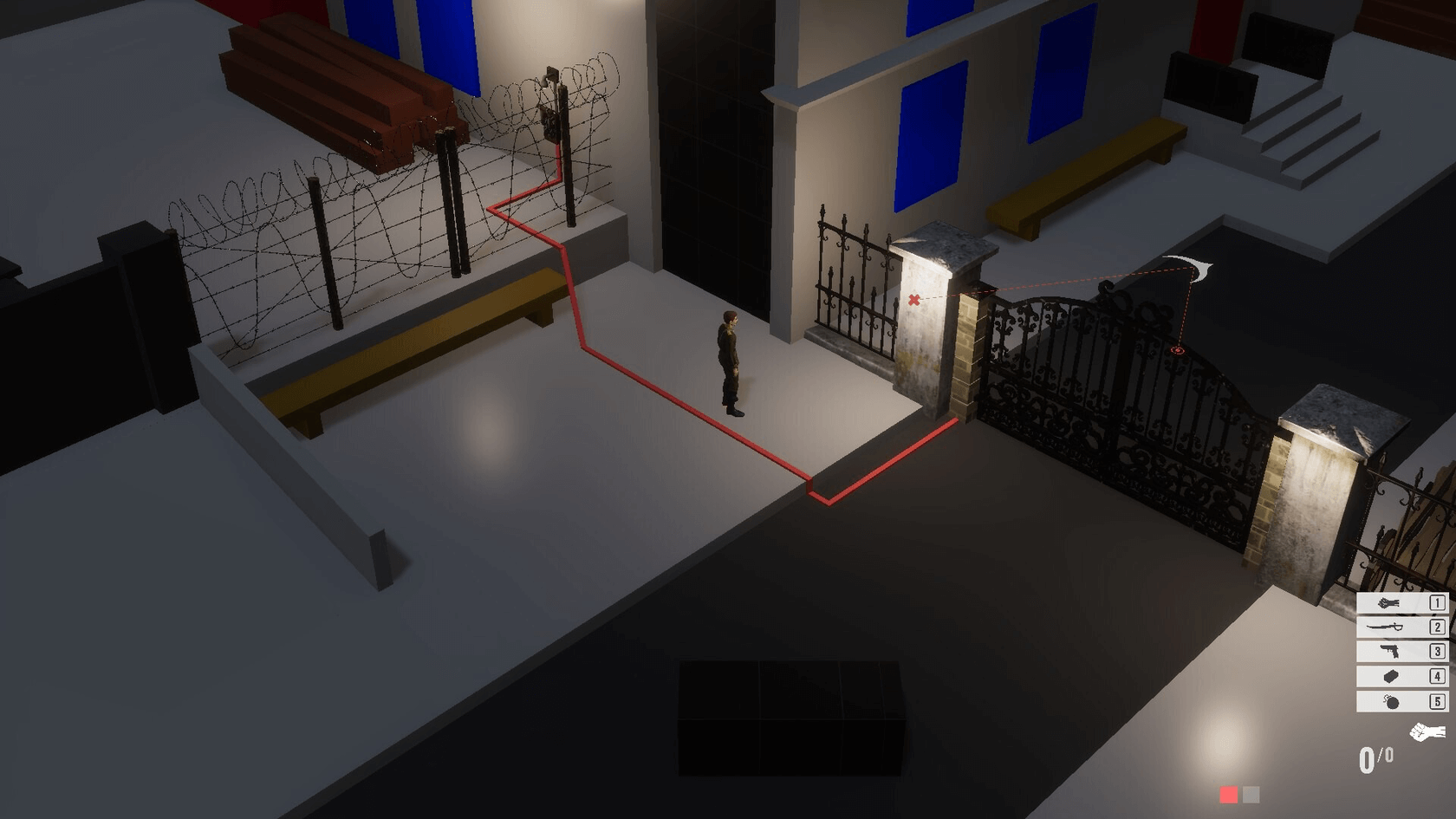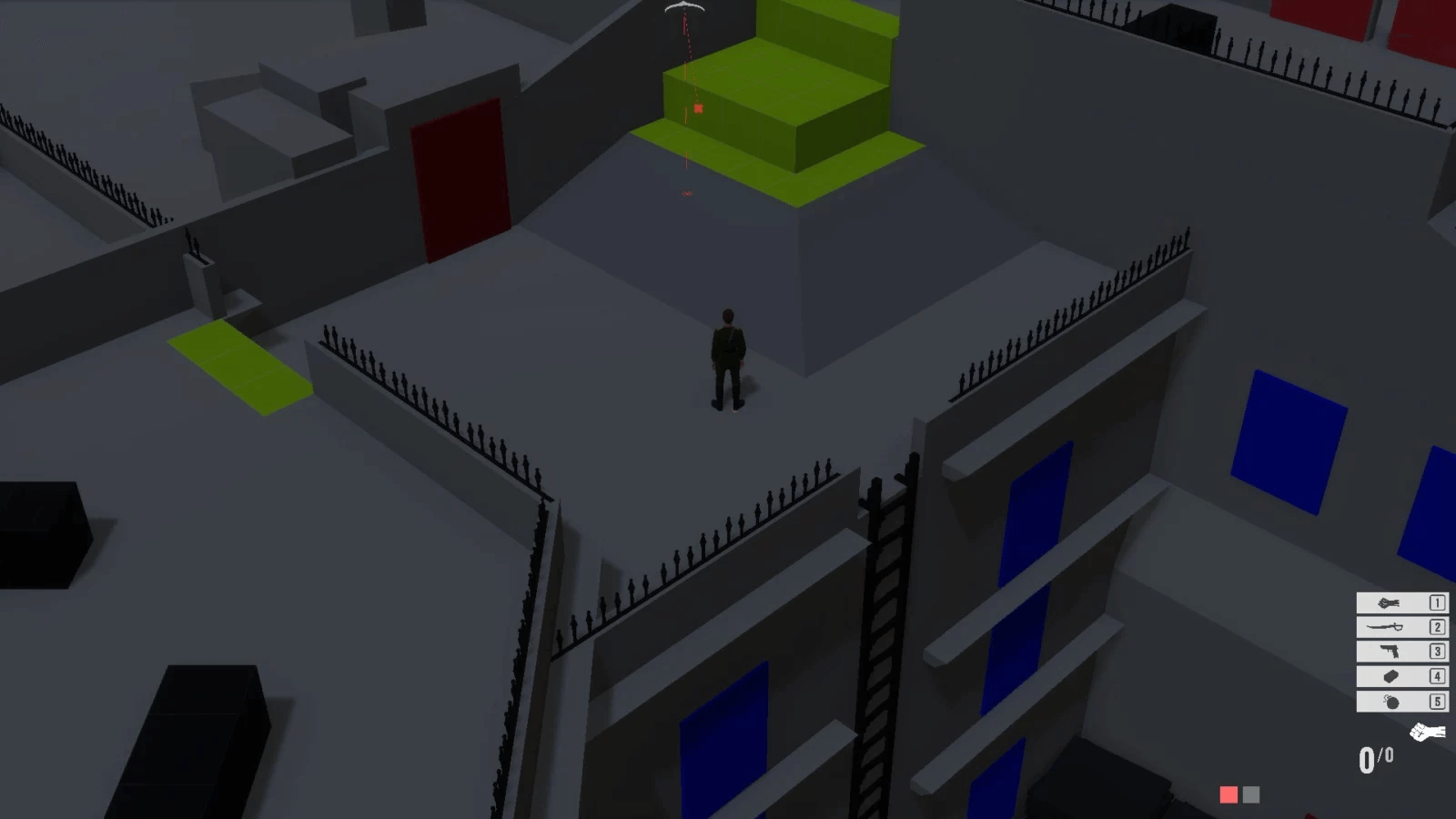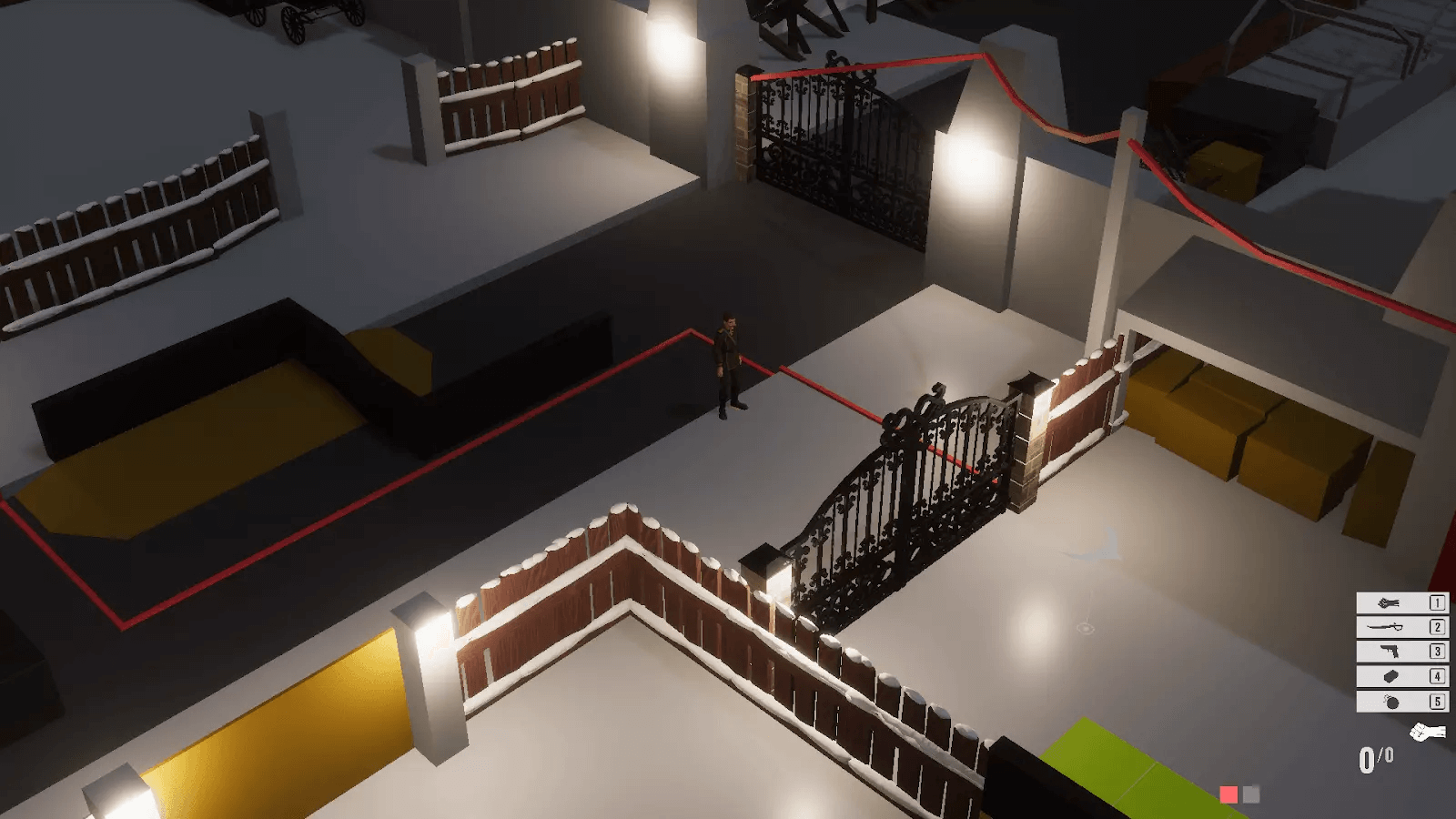

OCTOBER 27, 2022
This is the second part of the article, where we want to talk about the basic principles of level design, techniques and problems that we encountered when creating the Prologue location, scenes from which you could already see in our teaser. You can find the first part of the article in our DevBlog.
Something new
Last time we ended up with the player going through multiple battle arenas. In level design, it is very important to understand the pace and rhythm, for this reason, tense moments should be replaced with calm ones. After completing the challenges, we give the player a little break from this type of gameplay, explore the location, replenish the missing supplies, find secrets. This approach is a great opportunity to introduce the player to new mechanics. After a short walk through the city courtyards, the player is blocked by a gate that opens with a lever. At this point, we deliberately place the gate and the lever side by side and connect them with wire. This helps the player to clearly understand how these mechanics work in the game.
Last time we ended up with the player going through multiple battle arenas. In level design, it is very important to understand the pace and rhythm, for this reason, tense moments should be replaced with calm ones. After completing the challenges, we give the player a little break from this type of gameplay, explore the location, replenish the missing supplies, find secrets. This approach is a great opportunity to introduce the player to new mechanics. After a short walk through the city courtyards, the player is blocked by a gate that opens with a lever. At this point, we deliberately place the gate and the lever side by side and connect them with wire. This helps the player to clearly understand how these mechanics work in the game.

By pulling the lever, the player opens the door. It is important that the player sees the result of his actions as soon as he uses the lever. As the game progresses, the player again encounters a closed gate, but this time we're making it a bit more difficult to open the gate. The lever is behind a partition, and you need to find a way to get there. It is important that the basic principle (lever - wire - gate) remains unchanged, since at the initial stages of interaction with the mechanics it is necessary to show the player the invariance of its work, to form a habit in the player. In the later stages of the game, it is possible to break the basic principle by deceiving the player's expectation and creating interesting game situations. However, this technique should not be abused, since the repeated use of such a technique will no longer cause such emotions.

Go Left, Go Right
After getting acquainted with the new mechanics, it becomes possible to climb onto the roof and an attentive player will notice that he has a choice between two paths:
After getting acquainted with the new mechanics, it becomes possible to climb onto the roof and an attentive player will notice that he has a choice between two paths:

● The first is the main path, located on the right. It is the most obvious, as it is in the direction of the camera movement and the player has a ramp leading to it, and the objects that can be climbed take the form of stairs.
● The second one, much less visible, is on the left and leads to a secret. This path should not be completely invisible to the player, but it should be less intuitive to navigate. It does not have the same obviousness as the first one, it does not encourage the player to go in the opposite direction from the one in which the player moved throughout the level, and the camera itself does not focus on it, as it keeps the first path in the center of the screen.
● The second one, much less visible, is on the left and leads to a secret. This path should not be completely invisible to the player, but it should be less intuitive to navigate. It does not have the same obviousness as the first one, it does not encourage the player to go in the opposite direction from the one in which the player moved throughout the level, and the camera itself does not focus on it, as it keeps the first path in the center of the screen.
What’s this? Oh! A riddle!
Moving further in the level, the player is faced with a small chain of tasks that develop the mechanics of levers. The basic principle remains the same, but now the number of gates is increased. Also, when using the lever, the player does not see the result immediately, which adds an element of excitement. At its core, this is still the same mechanics, but with slightly changed conditions. This segment is a simple puzzle that does not exhaust the player but creates a pleasant sense of exploration and adds variety to the level.
Moving further in the level, the player is faced with a small chain of tasks that develop the mechanics of levers. The basic principle remains the same, but now the number of gates is increased. Also, when using the lever, the player does not see the result immediately, which adds an element of excitement. At its core, this is still the same mechanics, but with slightly changed conditions. This segment is a simple puzzle that does not exhaust the player but creates a pleasant sense of exploration and adds variety to the level.

They said it would be dangerous!
After solving the puzzle, the player advances through the level and enters the final arena. The player has already rested enough from combat clashes and is ready to test his strength again. The last arena slightly increases the difficulty level, but remains within the entry level.
At this point, we want to end our text about the principles of level design in the Prologue level, in order to give you the opportunity to get your own experience as you play through. This is just a small part of the whole level, and with this example we wanted to show you how the level design works in the game and what tricks we use. Much, of course, remained behind the scenes, since it is impossible to cover all aspects in a small text, but we will try to talk about them in the following articles.
After solving the puzzle, the player advances through the level and enters the final arena. The player has already rested enough from combat clashes and is ready to test his strength again. The last arena slightly increases the difficulty level, but remains within the entry level.
At this point, we want to end our text about the principles of level design in the Prologue level, in order to give you the opportunity to get your own experience as you play through. This is just a small part of the whole level, and with this example we wanted to show you how the level design works in the game and what tricks we use. Much, of course, remained behind the scenes, since it is impossible to cover all aspects in a small text, but we will try to talk about them in the following articles.















